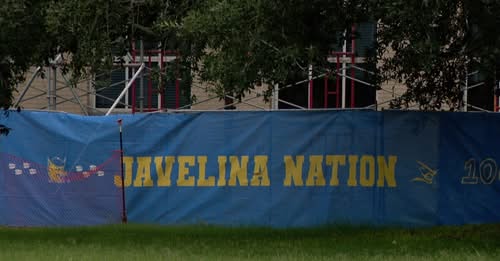The recent federal operation at Texas A&M-Kingsville has brought the issue of undocumented workers back into the national spotlight. According to an ICE official, 27 undocumented contractors were arrested on Thursday, June 26, during a targeted enforcement action on the university campus. As of now, 22 of those individuals remain in custody, while the status of the other five has not been disclosed. This incident raises important questions about immigration enforcement, labor practices, and the broader implications for communities and institutions that rely on contracted labor.
The operation at Texas A&M-Kingsville is part of a broader pattern of ICE enforcement actions targeting workplaces and construction sites where undocumented workers are often employed. These operations are typically carried out after investigations into employers who may be knowingly or unknowingly hiring workers without legal status. While ICE has not released specific details about what led to this particular operation, such actions are usually the result of audits, tips, or ongoing investigations into labor violations.
For the families of those detained, the aftermath of such operations can be devastating. Many of these workers have lived in the U.S. for years, contributing to their communities and supporting families both here and abroad. The sudden arrest and potential deportation of a primary breadwinner can leave spouses and children in financial distress, with few options for recourse. Advocacy groups often step in to provide legal assistance, but the process of challenging detention or deportation is lengthy and uncertain.
The presence of undocumented workers in construction and other labor-intensive industries is not a new phenomenon. For decades, sectors like agriculture, hospitality, and construction have relied on immigrant labor—sometimes documented, sometimes not—to fill jobs that many Americans are unwilling to take due to low wages or harsh working conditions. Employers often benefit from this labor force, paying lower wages without providing benefits, while workers accept these conditions out of necessity. When enforcement actions occur, the workers bear the brunt of the consequences, while employers may face fines but rarely criminal charges.
The Texas A&M-Kingsville case also highlights the role of universities and other large institutions in contracting labor. Many campuses undergo frequent construction and maintenance projects, often hiring third-party contractors to complete the work. These contractors, in turn, may subcontract portions of the job to smaller firms, creating layers of separation between the institution and the workers actually performing the labor. This complexity can make it difficult for universities to ensure that all workers on their campuses are legally authorized, even if they have policies requiring contractors to verify employment eligibility.
Critics of ICE operations argue that workplace raids are an inefficient and inhumane way to address immigration issues. Instead of targeting employers who create the demand for undocumented labor, these operations often punish workers who are simply trying to provide for their families. There is also concern that such enforcement actions instill fear in immigrant communities, making people less likely to report labor abuses or cooperate with law enforcement on other matters. Some advocates call for comprehensive immigration reform that would provide pathways to legal status for long-term residents while strengthening labor protections for all workers.
On the other hand, supporters of strict immigration enforcement argue that operations like the one at Texas A&M-Kingsville are necessary to uphold the law. They contend that undocumented workers take jobs away from American citizens and depress wages in certain industries. From this perspective, holding both employers and employees accountable is essential to maintaining a fair labor market. However, studies have shown that mass deportations do not necessarily lead to increased wages or job opportunities for native-born workers, as many of the jobs filled by undocumented immigrants remain vacant even after enforcement actions.
The legal process for those detained in such operations can vary. Some may be released on bond while their cases are pending, particularly if they have no prior criminal record or strong ties to the community. Others may face expedited removal, especially if they have previous deportation orders. Legal representation is critical in these cases, but many detainees cannot afford attorneys, leaving them at a severe disadvantage in immigration court. Nonprofit organizations and pro bono lawyers often work to fill this gap, but resources are limited.
For Texas A&M-Kingsville, the incident may prompt a review of contractor vetting processes. Universities and other large entities must balance the need for cost-effective labor with the responsibility to ensure compliance with employment laws. Some institutions have adopted stricter oversight measures, requiring contractors to use E-Verify—a federal system that checks work eligibility—or face penalties for noncompliance. However, even these systems are not foolproof, and subcontracting can obscure the true employment chain.
Beyond the immediate legal and logistical concerns, this case also touches on the broader debate over immigration policy in the U.S. The current system is widely regarded as broken, with millions of undocumented individuals living in the shadows and no clear path to regularization for most. While some politicians advocate for mass deportations and stricter border controls, others push for reforms that would allow undocumented workers to gain legal status, pay taxes, and work without fear of sudden arrest. The human cost of enforcement actions—families separated, livelihoods destroyed—often gets lost in the political rhetoric.
As the 22 detained contractors await their fate, their cases serve as a reminder of the complexities surrounding immigration and labor in America. While laws must be enforced, the methods and consequences of such enforcement deserve scrutiny. A more sustainable solution would address the root causes of undocumented migration, including labor demands, economic disparities, and the lack of legal pathways for workers to enter the U.S. legally. Until then, operations like the one at Texas A&M-Kingsville will continue to spark debate, leaving workers, employers, and communities caught in the middle.
The story of these 27 individuals is just one of many unfolding across the country every day. Their arrests may make headlines briefly, but the systemic issues behind their detention require long-term, compassionate solutions. Whether through policy changes, labor reforms, or shifts in enforcement priorities, the goal should be a system that respects both the rule of law and the dignity of those who contribute to the nation’s economy—often without recognition or protection.



